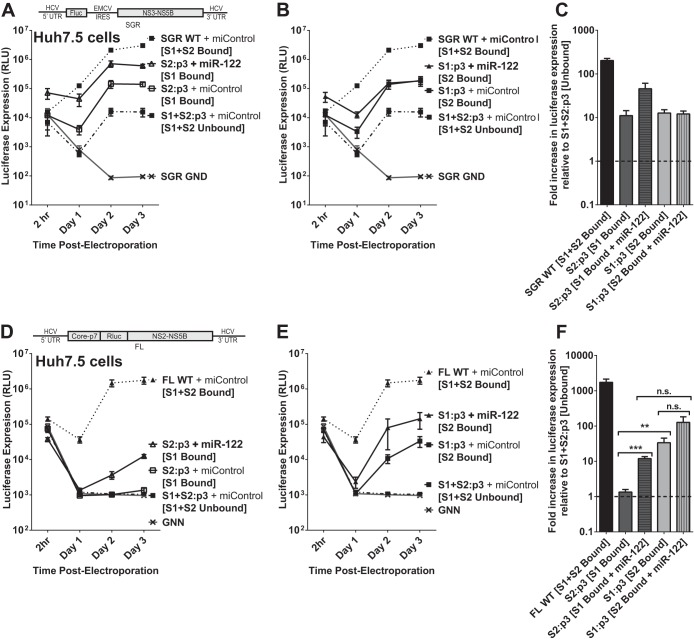FIG 7.
Increased miR-122 levels saturate S1 at a lower level of miR-122 than S2. (A) A time course of RNA replication in Huh7.5 cells electroporated with subgenomic S2:p3 RNA or the indicated control viral RNAs, supplemented with either miControl or with additional miR-122 to ensure that binding site S1 was maximally occupied. Replication was measured by firefly luciferase expression at the indicated time points. (B) A time course of RNA replication in Huh7.5 cells electroporated with subgenomic S1:p3 RNA or the indicated control viral RNAs, supplemented with either miControl or with additional miR-122 to ensure that binding site S2 was maximally occupied. Replication was measured as described for panel A. (C) The impact on HCV replication of exogenous miR-122 supplementation to the binding of either S1 or S2 from panels A and B was determined by comparing luciferase expression of the supplemented samples to that of subgenomic S1+S2:p3 [S1+S2 Unbound] (dotted line) on day 3 postelectroporation. (D) A time course of RNA replication in Huh7.5 cells electroporated with the indicated full-length viral RNAs and miRNAs as described for panel A. Replication was measured by Renilla luciferase expression at the indicated time points. (E) A time course of RNA replication in Huh7.5 cells electroporated with the indicated full-length viral RNAs and miRNAs as described for panel B. Replication was measured as described for panel D. (F) The impact on HCV replication of exogenous miR-122 supplementation to the binding at either S1 or S2 from panels D and E was determined by comparing luciferase expression to that of full-length S1+S2:p3 [S1+S2 Unbound] (dotted line) on day 3 postelectroporation.

